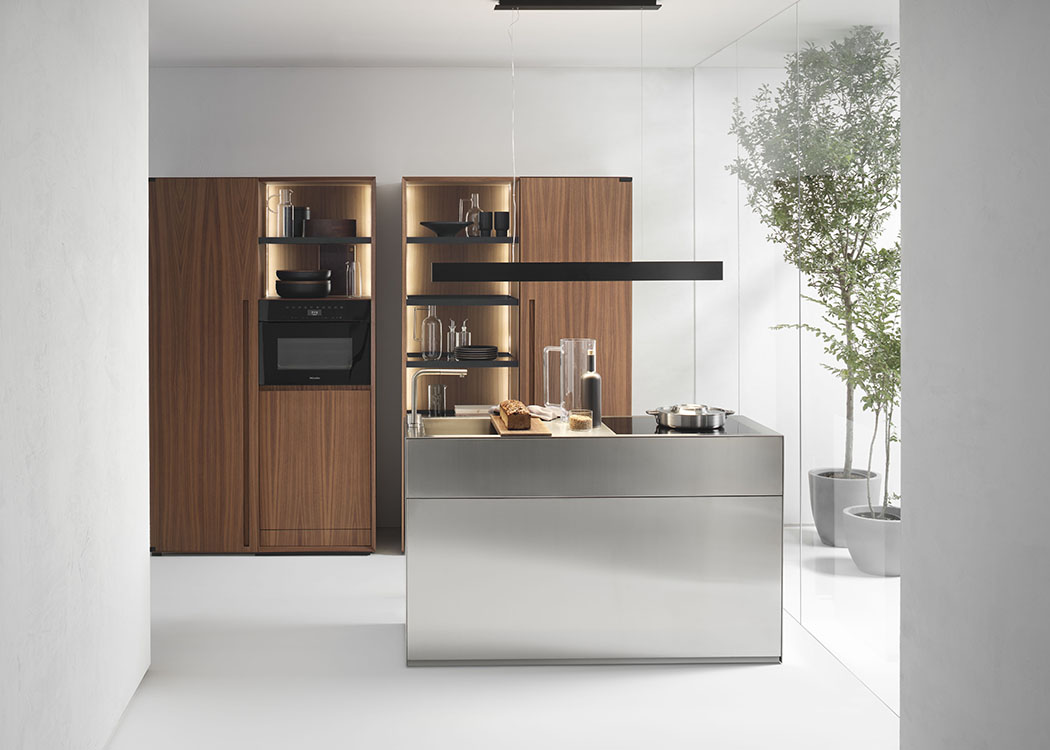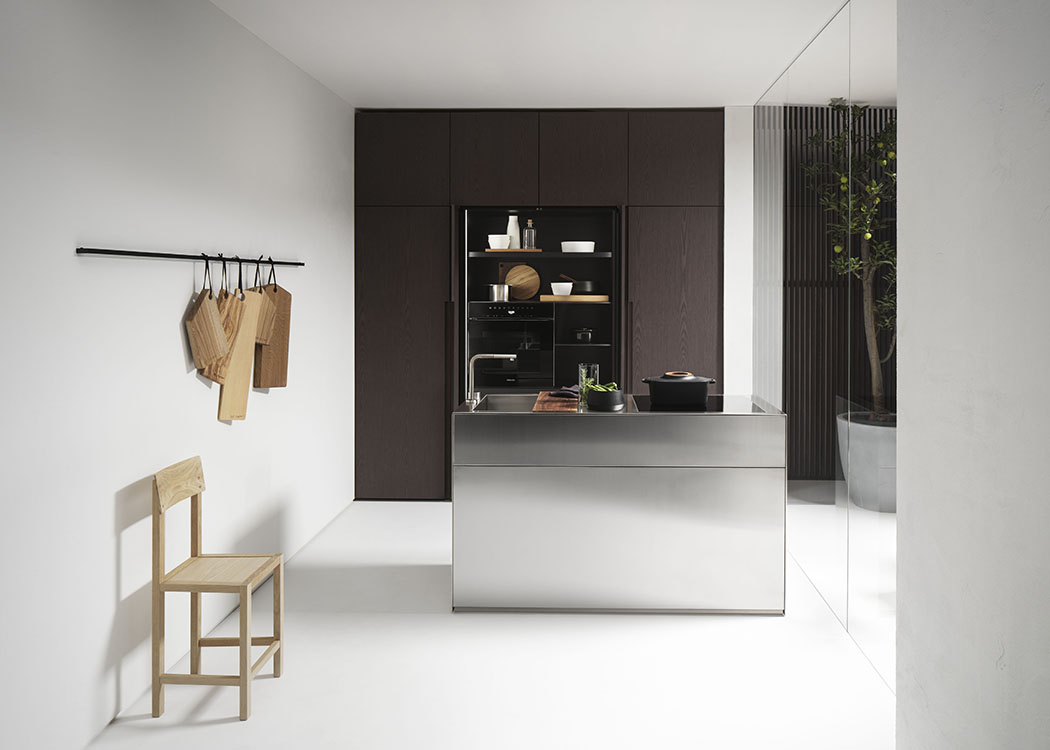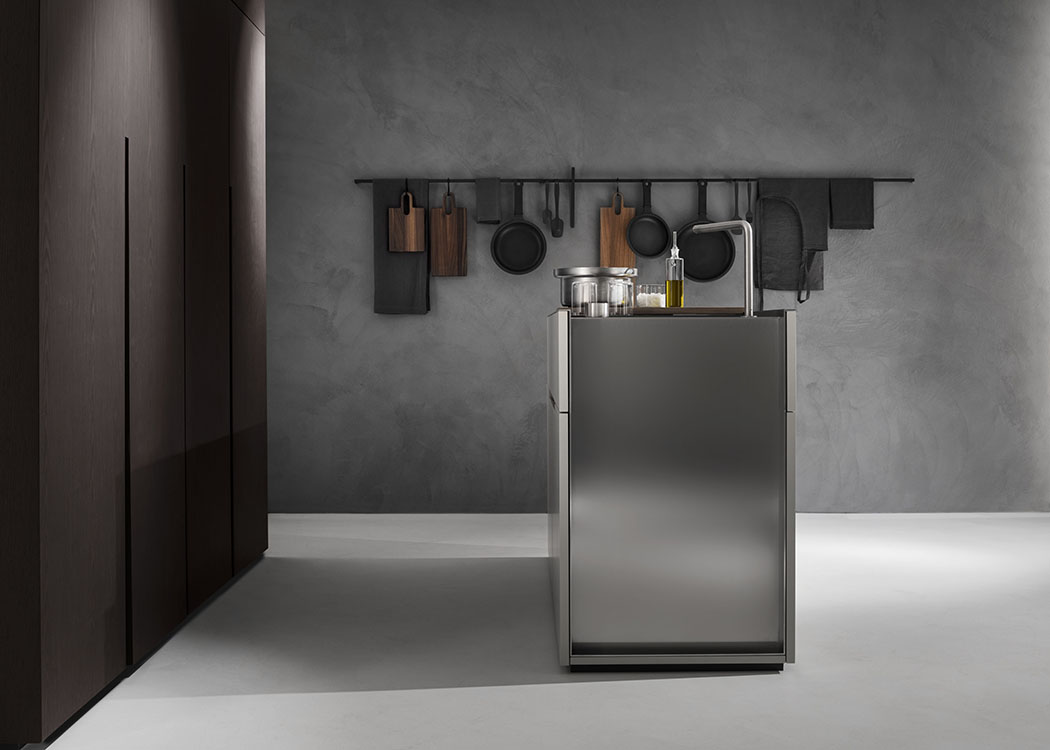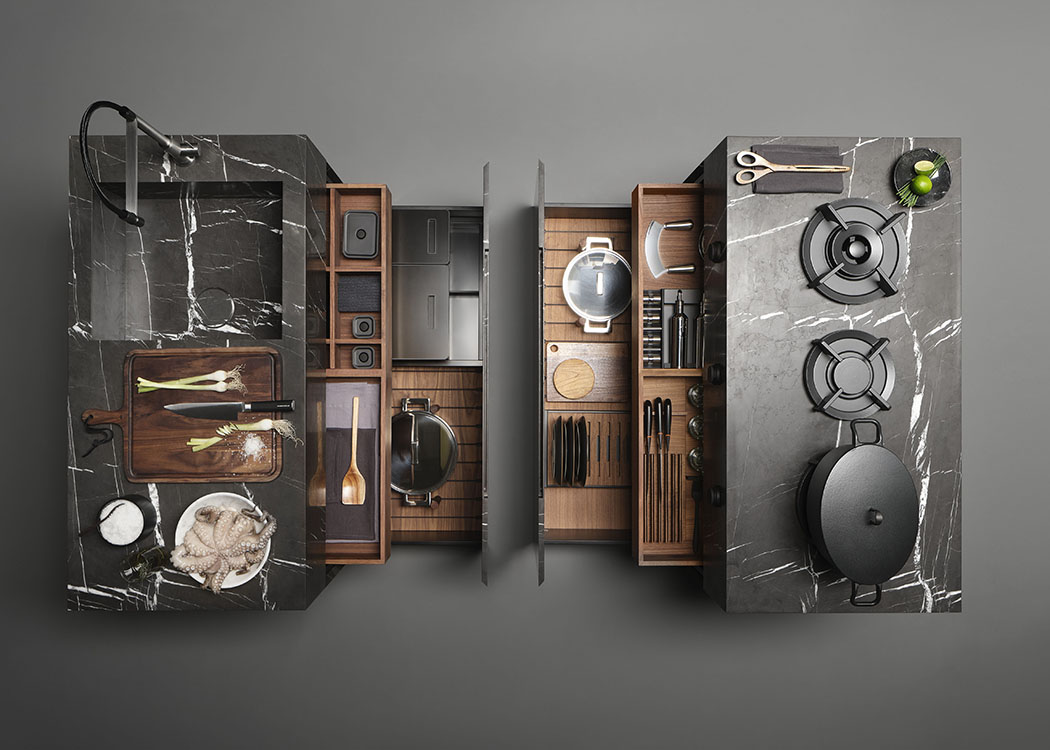Andrea Federici, 42, earned his degree at the Politecnico di Milano, and in 2003 launched his career as a designer and art director, developing entire collections for kitchens, bath, office furniture and living rooms. He has received numerous international awards, and the prestigious EDIDA 2023 nomination for the Small Living Kitchen design project.


How did you come up with the line of kitchens for Falper?
I started out with the realisation that family households are radically different from what they used to be: there are more couples without kids, and singles, living in high-density urban areas where space is always at a premium. Temporary dwellings have multiplied thanks to the mobility of business people. There are new types of consumers that kitchen design firms should be responsive to. Falper is appealing to a unique market niche, people who live in upscale small spaces, potential clients with luxury-level disposable income who are looking for sophisticated objects that express their status.
What was your approach to the design process?
The modern kitchen comes down to us from the Frankfurt Kitchen created in 1926 by Margarete Schütte-Lihotzky, the first Austrian female architect, who designed a system of modular furniture. Springing from that, we re-imagined the archetypal kitchen – it’s the first time since then that it’s being industrially replicated. We started with the idea of an experiment like the Smart, a little car designed to be able to park in small spaces without sacrificing style that became a status symbol. We lent dignity to the small kitchen. And that’s demonstrated by the recognition and appreciation I’ve gotten from professionals in the sector and from the press.


How did the Falper kitchens design project start?
I’ve known Luca Fallavena (CEO) for about ten years; the idea of a mini kitchen came from him. We started researching it in 2018: it took 6 months of study, and at the end of that period I presented a 300-page analysis, writing everything we could and couldn’t do. The first design was delivered in the summer of 2019. The real challenge was the technical part with suppliers and the production chain. We had to invent everything – around every curve we hit an obstacle, and during the pandemic we pushed ahead via video calls. We saw the assembled kitchen for the first time in February 2022, and we presented it at the Salone del Mobile di Milano in June.
Will people still cook in the future?
We’ll still cook, but our relationship with the kitchen will change. There will be a sort of cooking for guests, there will be “performance” cooking, show cooking at home. There’s already a tendency towards hybridization, exotic flavours mixing traditional Italian dishes with Japanese, Chinese, Thai, Indian or Mexican cuisine. We have become more playful, so we’ll cook to “play chef,” to play out a story, to look glamourous even standing over the stove, and to show off our skills. The kitchen will be a gathering place, a place to socialise and have fun.
